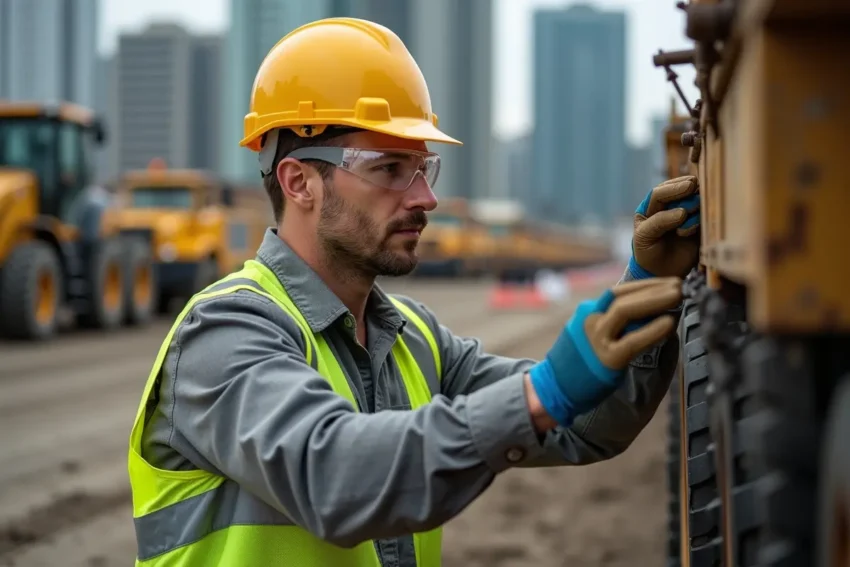Smart Habits That Help Avoid Workplace Risks

Staying safe at work is about more than just following rules; it’s about building smart habits that become second nature. Developing these habits can significantly reduce your risk of accidents and injuries, no matter your industry.
This guide will walk you through seven practical habits you can adopt to create a safer work environment for yourself and your colleagues. By being mindful and proactive, you can help prevent common workplace incidents before they happen.
Contents
Stay Aware of Your Surroundings
One of the simplest yet most effective safety habits is maintaining situational awareness. This means being conscious of the people, equipment, and potential hazards around you at all times. Distractions like using your phone, wearing headphones, or rushing can cause you to overlook dangers such as wet floors, moving machinery, or obstructed walkways.
Make it a habit to scan your environment when you enter a new area or start a task. Notice where emergency exits are, identify potential trip hazards, and be mindful of any unusual sounds or activities. This level of awareness helps you react quickly to unexpected situations and avoid preventable accidents.
Keep Your Workspace Tidy
A cluttered workspace is a hazardous one. Loose cables, misplaced tools, and stacked boxes can easily become trip hazards. A messy environment also makes it harder to find what you need, which can lead to frustration and rushed, unsafe actions.
Dedicate a few minutes at the beginning and end of each day to organize your area.
- Secure loose cords and wires.
- Store tools and materials in their designated places.
- Keep walkways and emergency exits clear.
- Clean up spills immediately.
This simple routine not only reduces the risk of slips, trips, and falls but also improves efficiency and creates a more professional atmosphere.
Use Equipment and Tools Correctly
Misusing tools and equipment is a leading cause of workplace injuries. Whether it’s a simple hand tool or complex machinery, using it for its intended purpose and according to the manufacturer’s instructions is crucial. Never take shortcuts or use makeshift solutions, as this can lead to equipment failure and serious accidents.
Before using any tool, inspect it for damage or defects. If something seems off, report it immediately and do not use it. Always wear the appropriate personal protective equipment (PPE) required for the task, such as gloves, safety glasses, or hard hats. Proper training is also essential, so never operate machinery you haven’t been authorized and trained to use.
Take Regular Breaks
Fatigue can severely impair judgment, slow reaction times, and reduce concentration, making you more susceptible to errors and injuries. Pushing through exhaustion, especially in roles that require physical labor or intense focus, puts both you and your coworkers at risk.
Incorporate short, regular breaks into your workday to rest and recharge. Step away from your workstation, stretch, or walk around for a few minutes. Staying hydrated and eating nutritious meals also plays a vital role in maintaining your energy levels and focus throughout the day. Prioritizing rest is not a sign of weakness; it’s a smart strategy for staying alert and safe.
Practice Proper Lifting Techniques
Back injuries are one of the most common workplace complaints, often caused by improper lifting. Lifting heavy objects without the right technique can strain your muscles and spine, leading to chronic pain and long-term disability.
Always follow the golden rule of lifting: lift with your legs, not your back.
- Keep your back straight and bend at your knees.
- Get a firm grip on the object.
- Hold the load close to your body.
- Avoid twisting your torso while lifting.
If an object is too heavy or awkward to lift alone, don’t hesitate to ask for help or use mechanical aids like a dolly or forklift.
Communicate Clearly and Report Hazards
Effective communication is the foundation of a safe workplace. If you spot a potential hazard, such as a leaky pipe, a frayed electrical cord, or a missing guard on a machine, report it to your supervisor immediately. Don’t assume someone else has already seen it or will take care of it.
Encourage an open-door policy where employees feel comfortable reporting safety concerns without fear of reprisal. Clear, consistent communication ensures that everyone is aware of potential risks and understands the procedures for addressing them.
Know and Follow Emergency Procedures
In an emergency, knowing what to do can be the difference between a minor incident and a catastrophe. Familiarize yourself with your workplace’s emergency action plan, including evacuation routes, assembly points, and the locations of fire extinguishers and first-aid kits.
Participate in all safety drills and training sessions. Understanding your role and responsibilities during an emergency ensures a calm and orderly response, protecting everyone’s safety. If you are ever unsure about a procedure, ask for clarification. It’s always better to be prepared.
Building a Culture of Safety
While these habits are personal responsibilities, they contribute to a larger culture of safety within the workplace. When everyone is committed to looking out for themselves and each other, the entire organization becomes a safer place to be. However, accidents can still happen despite the best precautions.
If you find yourself injured at work and need guidance on your rights and options, consulting with a qualified professional, like an injury attorney in Salt Lake City, can provide the clarity and support you need. By integrating these smart habits into your daily routine, you empower yourself to work more safely and confidently.



